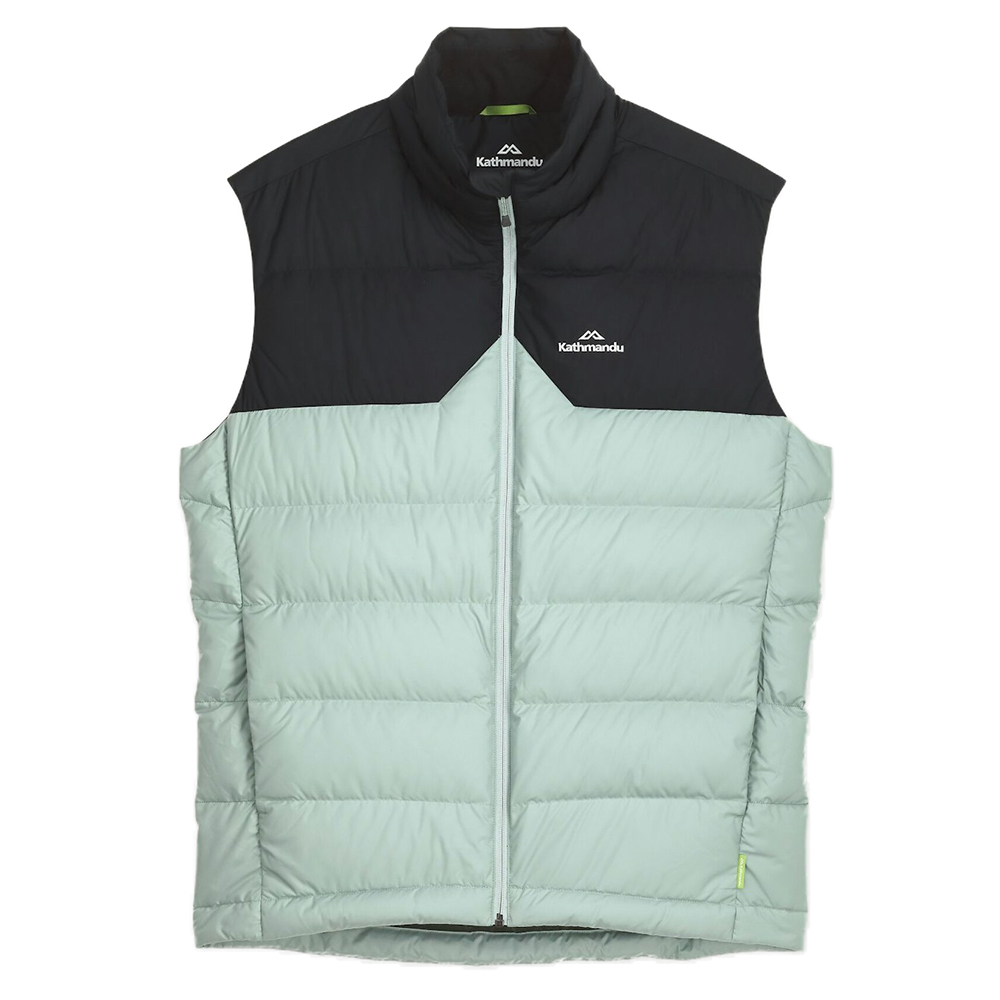The best gilets 2025: stay cozy to the core on all your backcountry adventures
We've put the best gilets and bodywarmers to the test to help you find your perfect version, whether you're hiking, camping, or running the trails
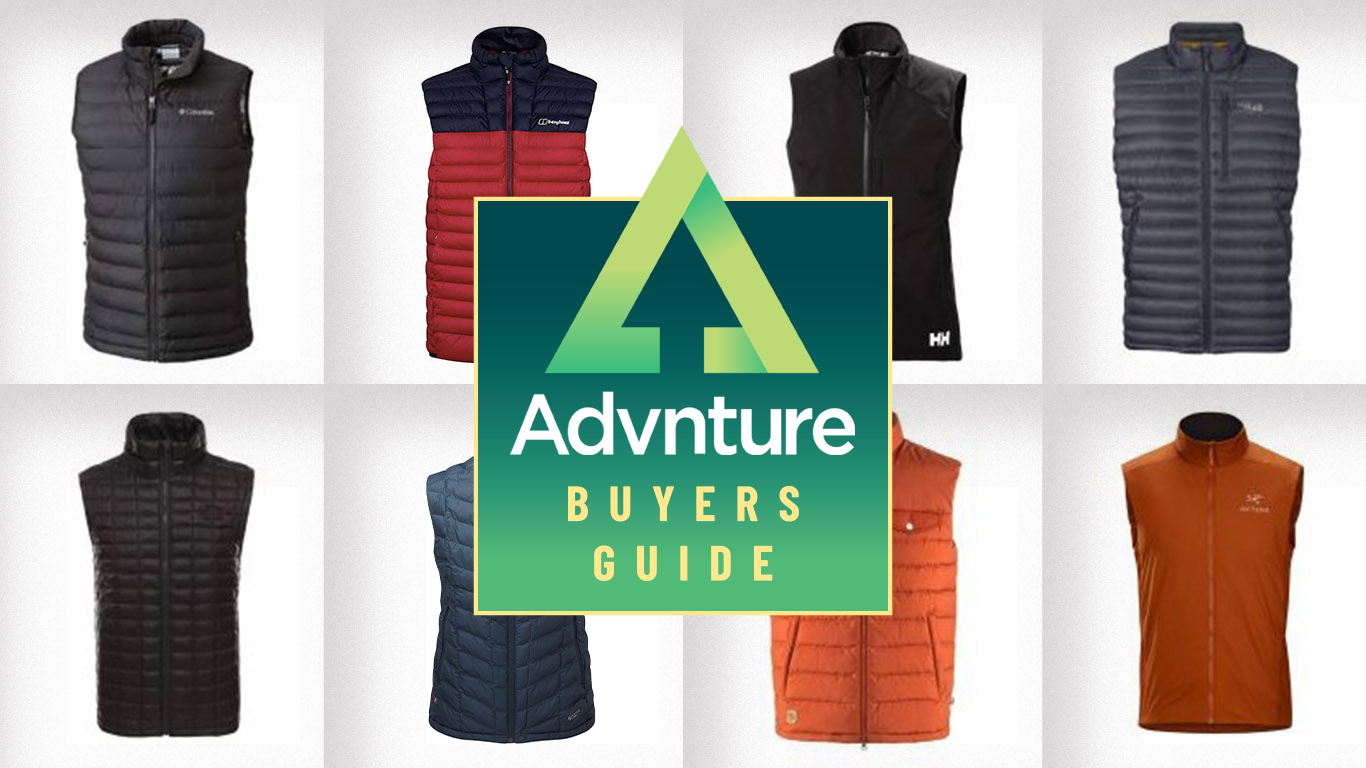
The best gilets and the best women’s gilets do a vital job of keeping your core warm, while allowing you more freedom of movement than a long-sleeved puffer.
Whether you're setting up camp, building a fire, or just lugging a backpack, there's an unencumbered feeling that comes from layering a bodywarmer over base layers – one that you might not get from the best down jackets.
This selection of the best hiking vests and gilets for walkers assembles a variety of down, feather and synthetic insulation to keep your core warm while your arms can get on with the task at hand. You can team it with one of the best hiking shirts to keep out chills without getting sweaty.
All the gilets in this guide have been put through their paces in mild, wet, cold, and windy conditions to assess their warmth and breathability. We've also thoroughly tested all fastenings and pockets, and taken into account the sustainability of their materials and production.
Complete your technical outfit with a pair of the best hiking pants and you’ll be ready to stride across the countryside in comfort.
The quick list
This is our quick list, a brief overview of the best gilets available today. To find out more about each product, see our more detailed write ups further down the page in this guide.
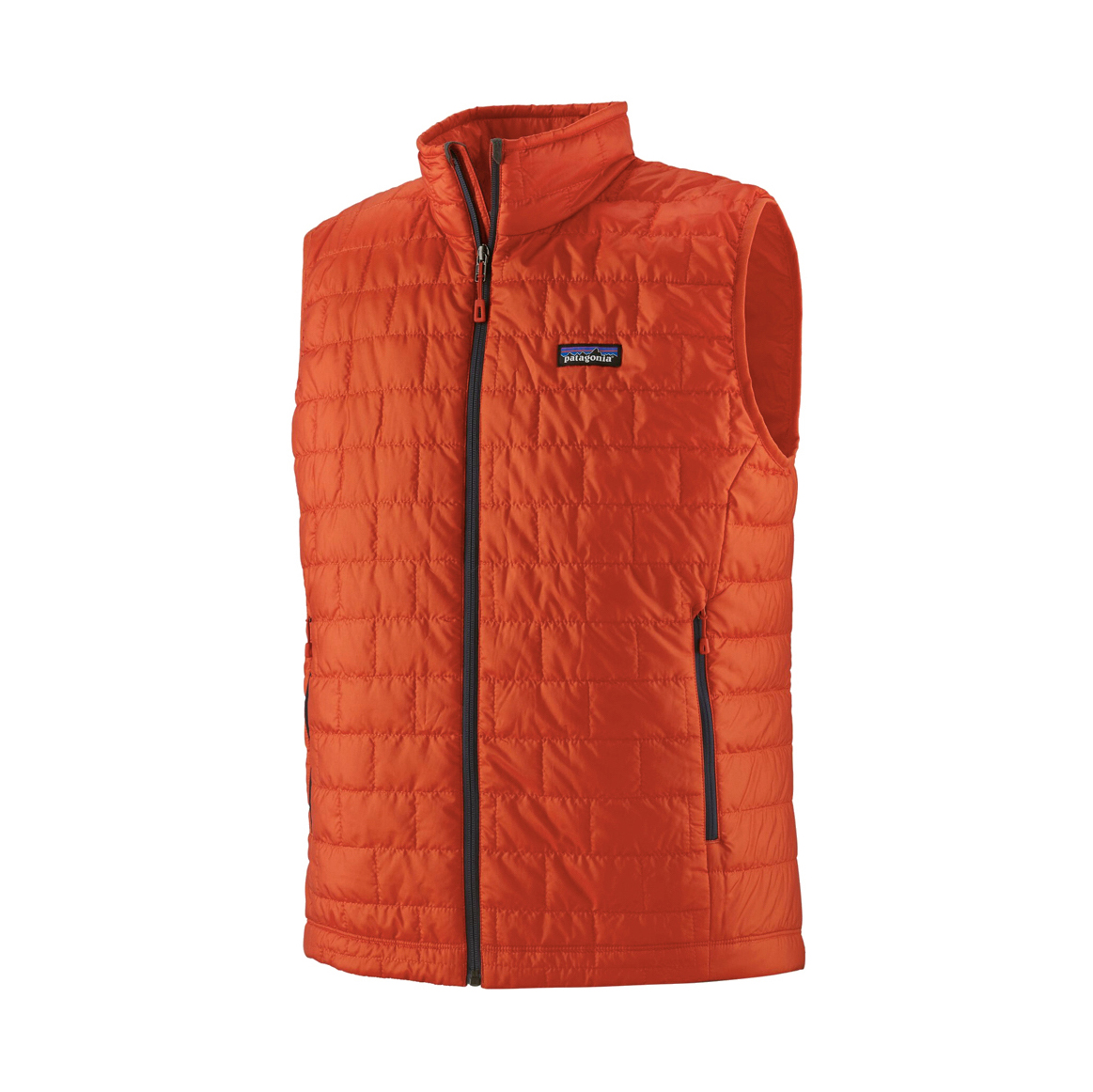
Keeps you cosy, while allowing you to bask in the knowledge that everything has been done to minimize environmental impact, both in its production and afterlife. The insulation is both warm and highly squishable so it packs down easily
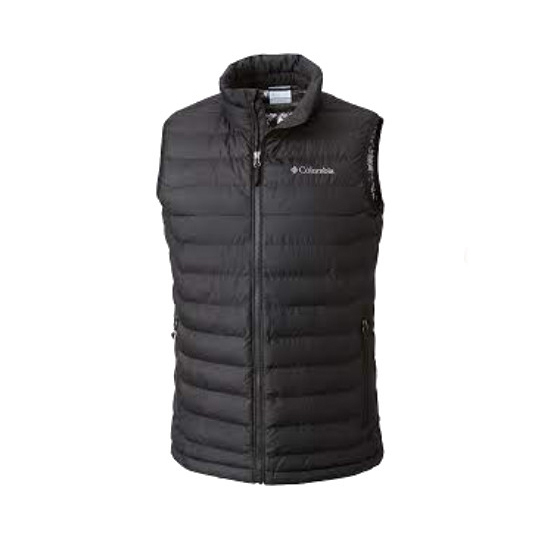
Columbia's thermal-reflective Omni-Heat lining makes this gilet a breed apart, which is all the more impressive when you consider the Powder Lite's low price point. It's bulkier than some, but it'll keep you cozy and is water resistant too
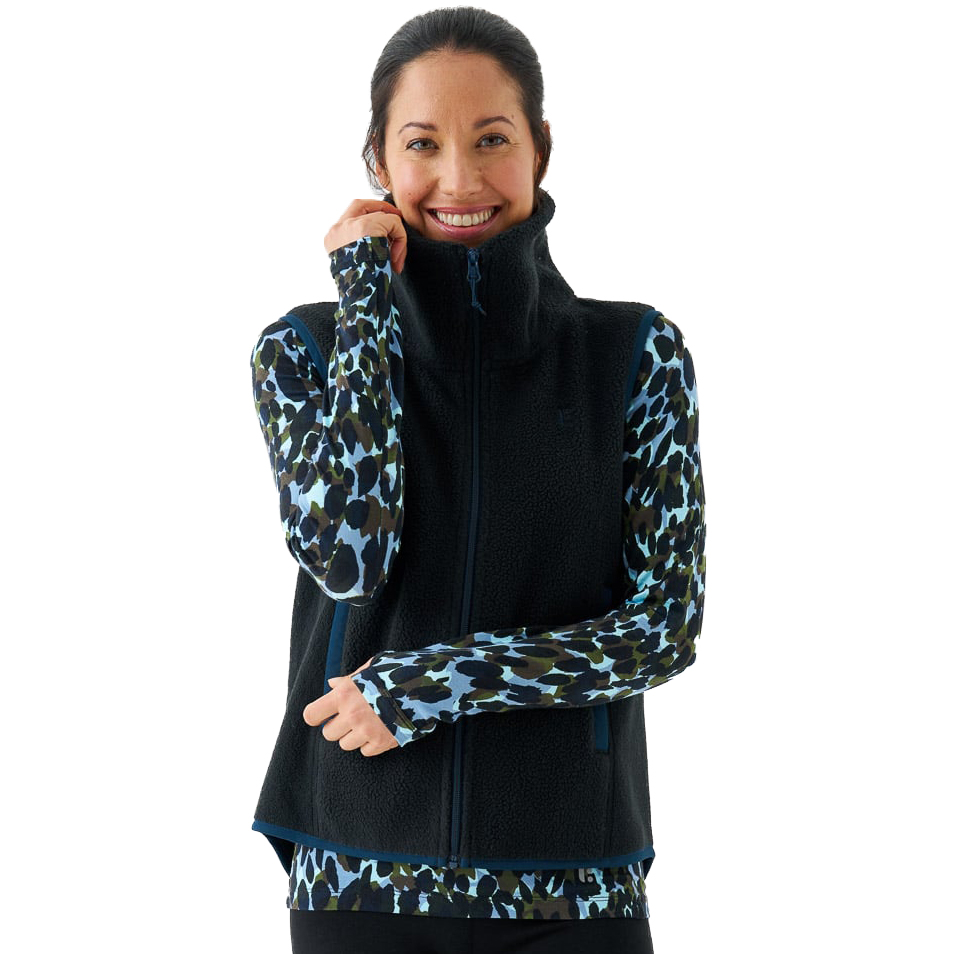
Both fully recycled and recyclable, the BAM Bamboo Women’s 73 Zero Fleece Gilet provides a welcome layer of extra warmth whether you're hiking the hills or heading to the shops
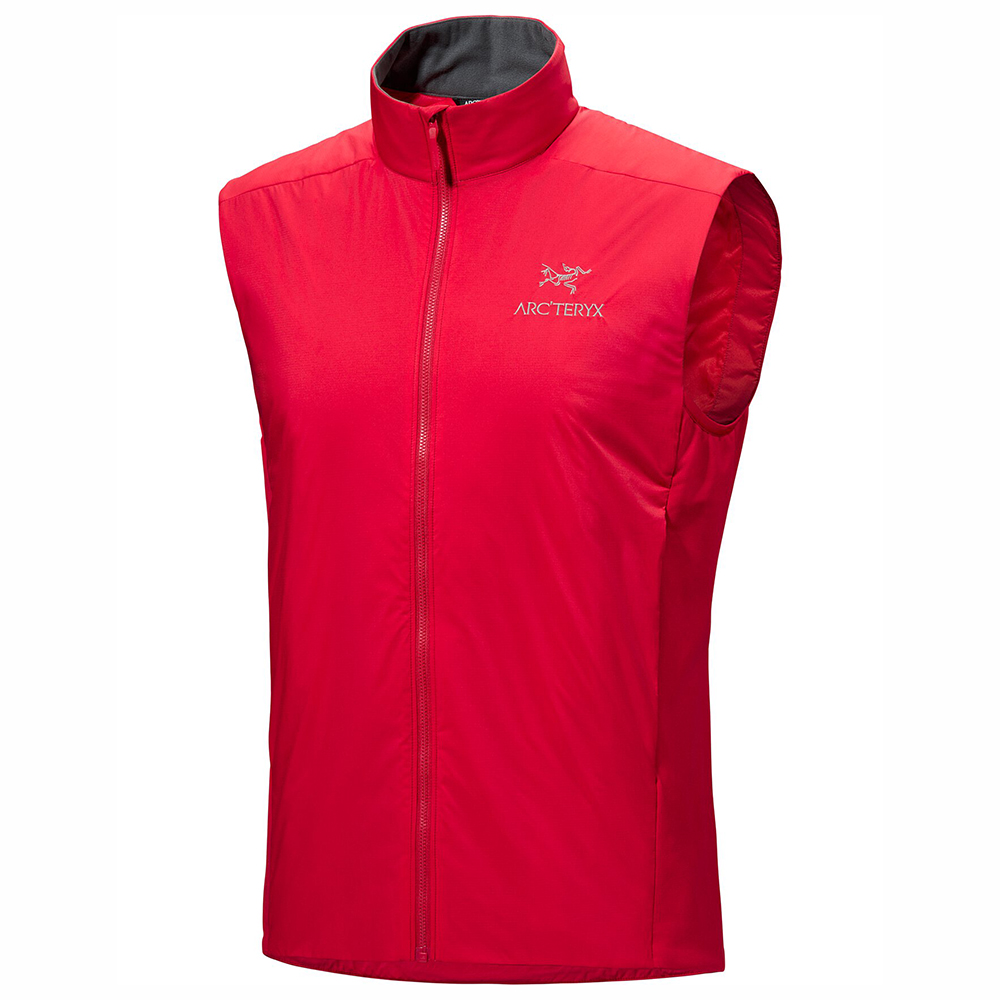
A thin, breathable gilet, the Arc’teryx Atom Vest gives light-touch wind protection when worn over a base layer, while stretchy side panels enable a full range of arm movement without exposing your skin round the waist
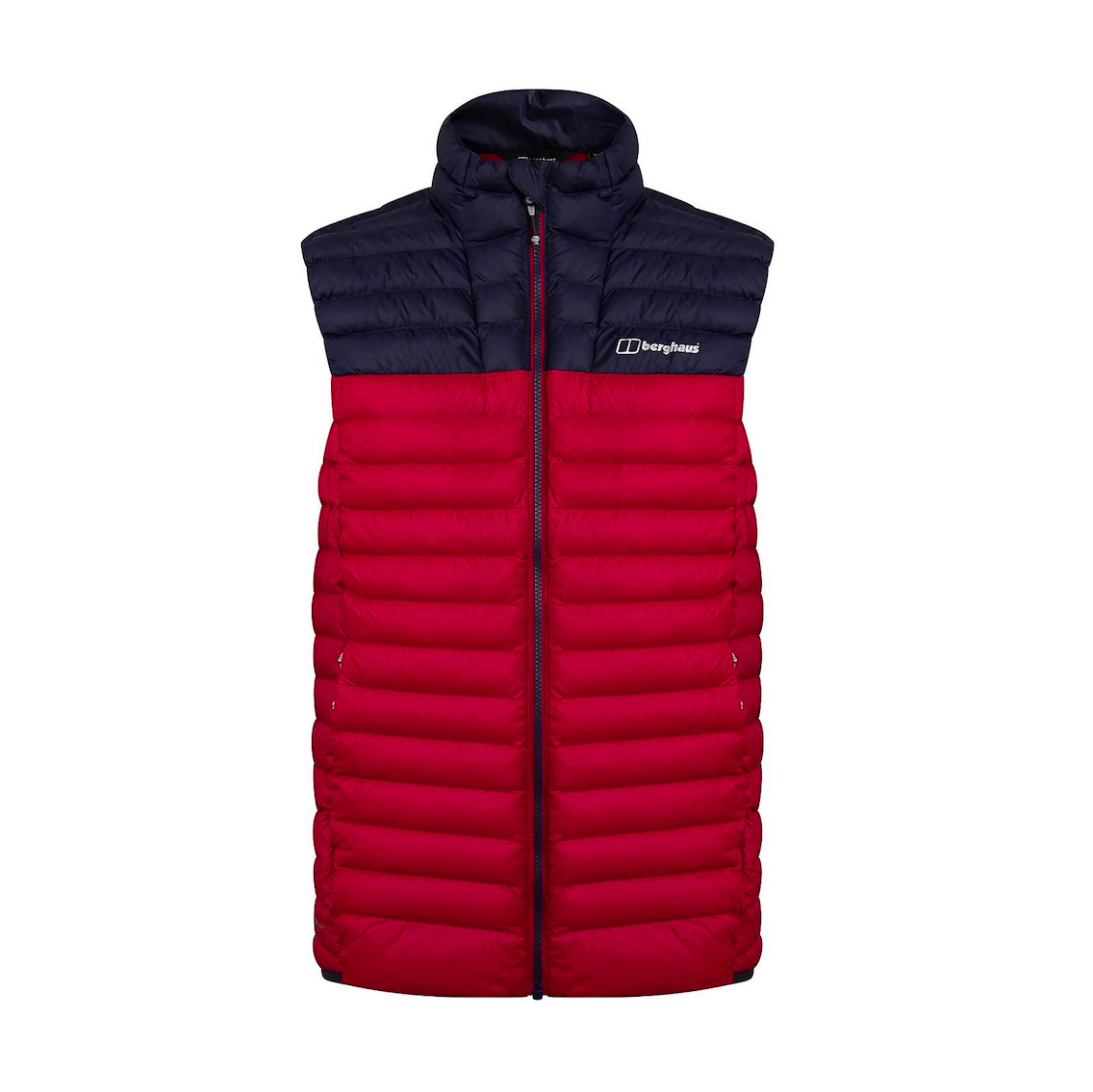
The cut of this vest features a dropped hem, which is designed to keep your lower back covered when you bend over. A small touch that can make all the difference when the wind picks up and seems determined to find its way in. A tall collar, soft chin guard and elasticated armholes also keep the chills at bay
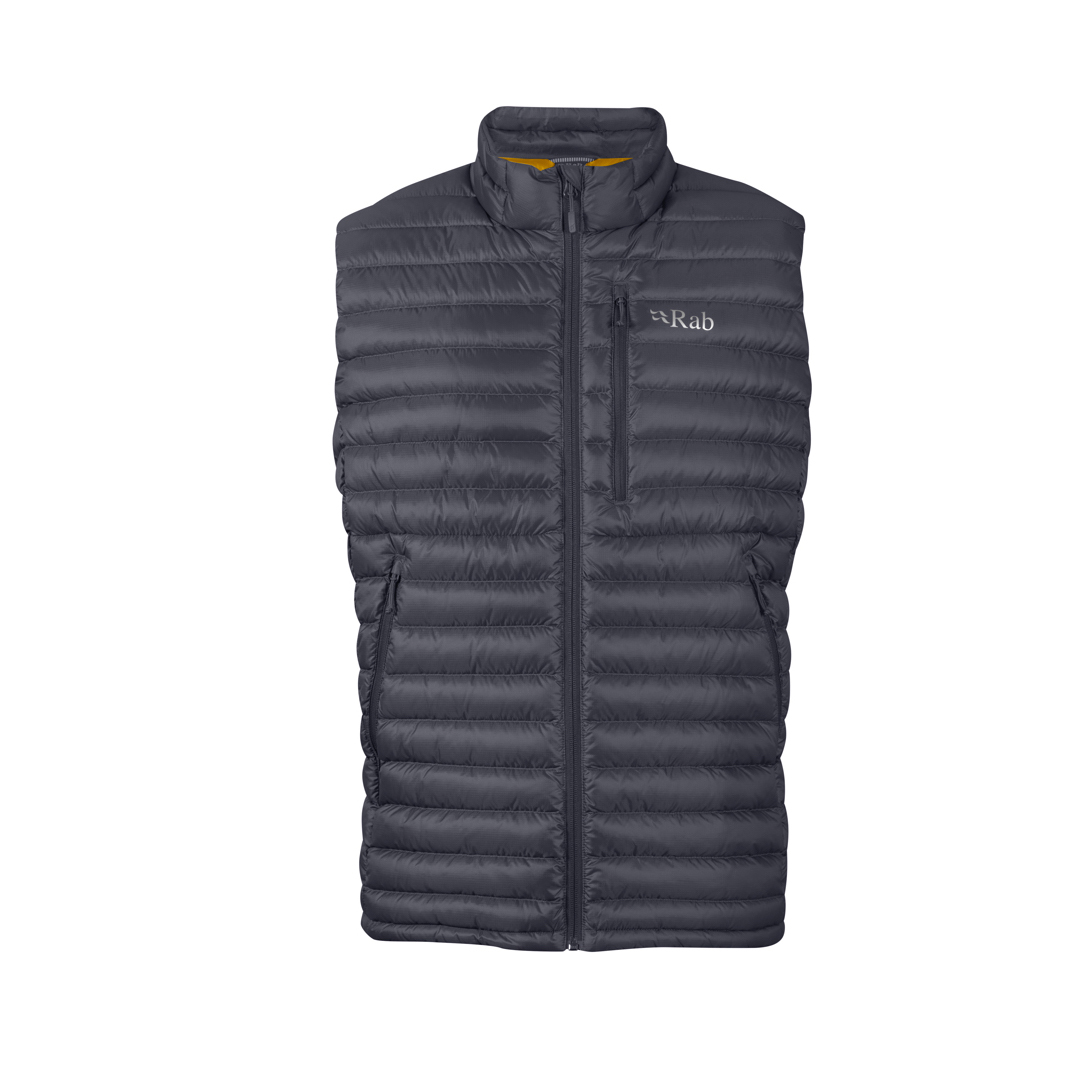
We love to see the continuing move by outerwear companies to ethical production practices. Here, Rab have used recycled down with a fill power of 700, meaning your conscience will stay clear while the Microlight helps you stay warm. This is a durable vest, and should it need repairing Rab can help with that too
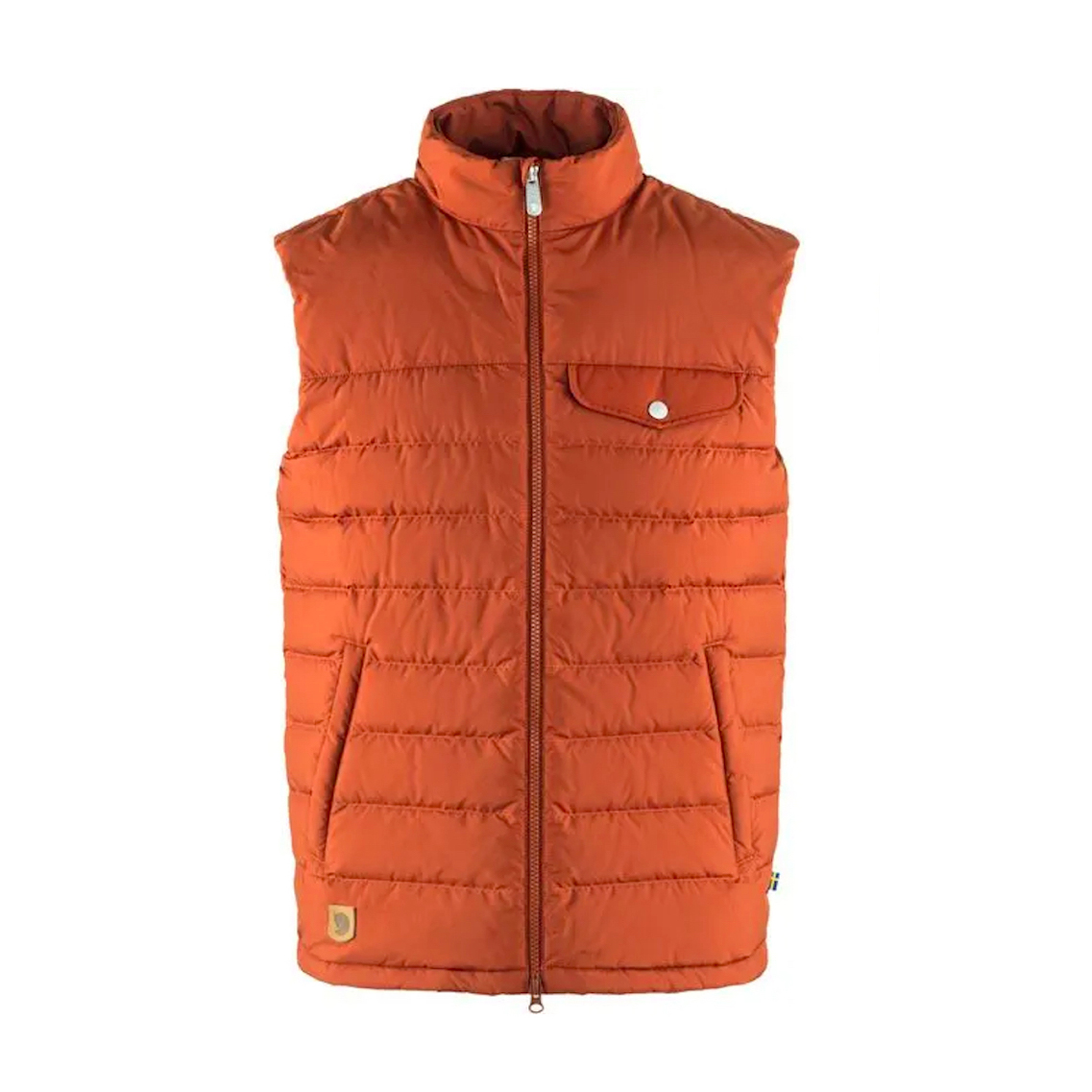
Made with a recycled polyester outer, treated with a PFC impregnation, and filled with ethically-sourced down, gilets don't come much more eco-friendly and sustainably produced than this. This is a super cosy vest, that will cope better with the more extreme ends of the cold season than others here
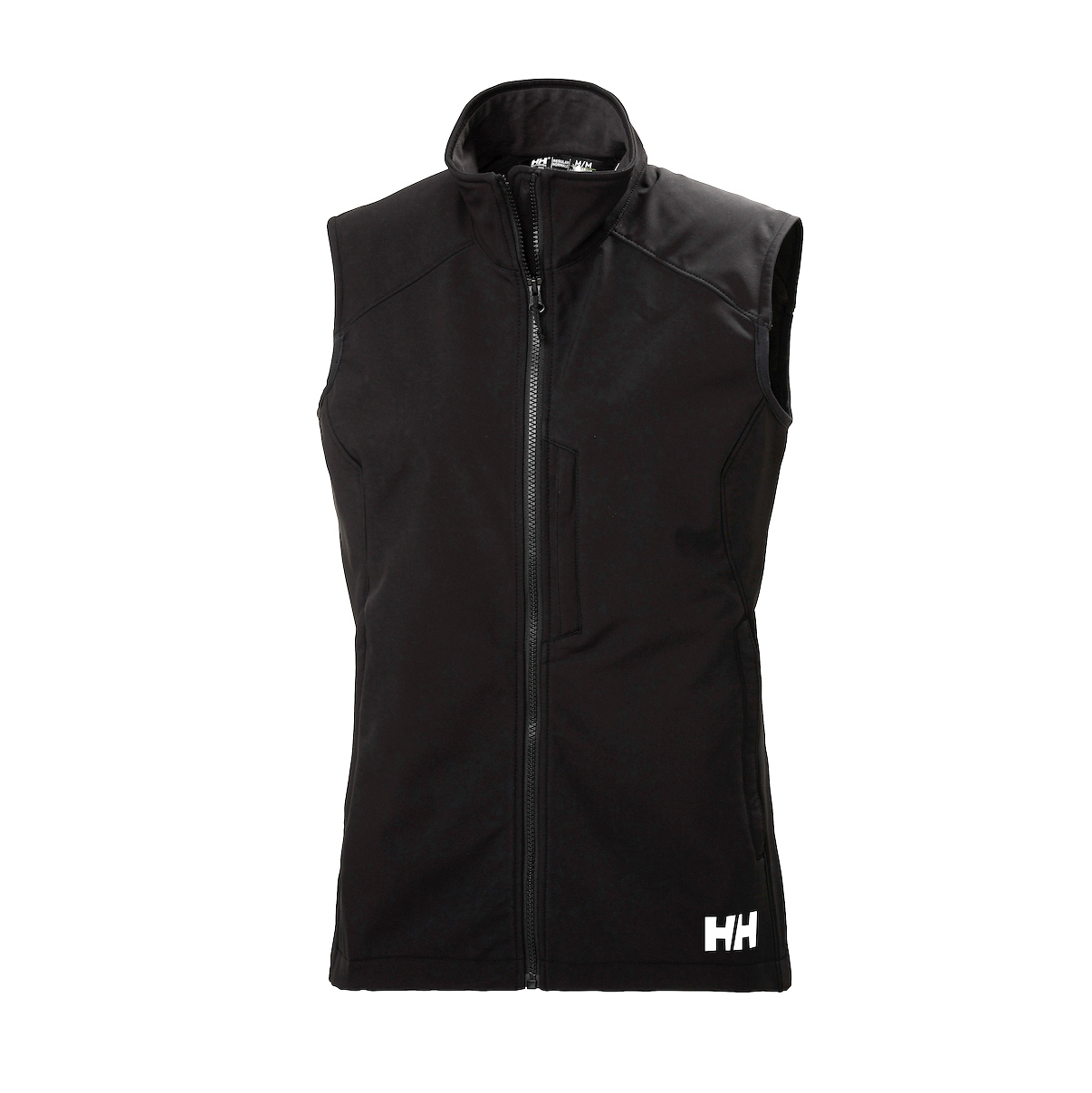
With fleece-style insulation and an outer shell treated with a water repellent finish, this is a highly breathable vest that's well-suited when you want to push your limits on the trail. It's been made using bluesign-certified processes, and the water repellent is PFC-free
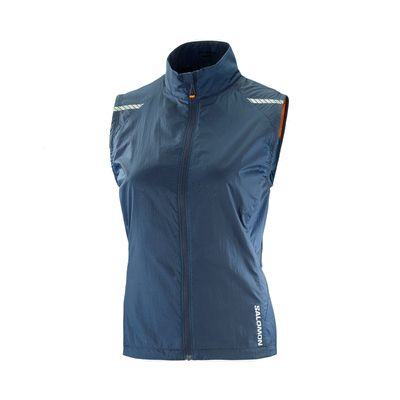
If you're looking for a lightweight vest, the Sense Flow may well get your vote. It's been designed with runners in mind, but also works as a minimalist extra layer for hikers or fastpackers. It stuffs down into a tiny size, so it's easy to stow in a hydration pack or bumbag

Another slightly different take on a gilet, with 'slab' style insulation rather than individual baffles. The upside? It's extra toasty. The downside? It's much bulkier than others we tested. However, we think this vest works brilliantly as an outer layer and the synthetic filling means it should stay warm when wet
Best gilets comparison table
Gilet | RRP | Insulation | Weight | Models available | Sizes |
Patagonia Nano Puff | $149 (US) / £130 (UK) | 60g PrimaLoft Gold Insulation Eco 100% (synthetic fill) | 230g / 8.1oz | Men’s / Women’s | XS-XXL |
Columbia Powder Lite | $110 (US) / £75 (UK) | Synthetic fill & Omni-Heat thermal-reflective lining | 615g / 21.7oz | Men’s / Women’s | XS-XXL |
Kathmandu Epiq 600 Fill Down Vest | $169 (US) / £170 (UK) | 80% duck down, 20% duck feather, 600 fill power | 440g / 15.5oz | Men’s / Women’s | XS-XXL |
BAM Bamboo Women's 73 Zero Fleece Gilet | $110 (US) / £79 (UK) | Polyester | 330g / 11.6oz | Women's only | XS-L |
Arc'teryx Atom | $200 (US) / £180 (UK) | Synthetic (Coreloft Compact 60g/m²) | 230g / 8.1oz | Men’s / Women’s | XS-XXL |
Berghaus Vaskye | £100 (UK) | Hydroloft Polyball (synthetic fill) | 357g / 12.6oz | Men’s only | XS-XXXL |
Rab Microlight Down | $180 (US) / £130 (UK) | Recycled 700 fill-power down | 317g / 11.2oz | Men’s / Women’s | XS-XXL |
Fjällräven Greenland Down | £215 (UK) | Ethically-sourced goose down | 380g / 13.4oz | Men’s / Women’s | XS-XXL |
Helly Hansen Paramount Softshell | $110 (US) / £100 (UK) | Fleece | 360g / 12.7oz | Men’s / Women’s | S-XXL |
Salomon Sense Flow | $150 (US) / £135 (UK) | Synthetic | 105g / 3.7oz | Men's / Women's | S-XXL |
Páramo Men's Torres Medio | $155 (US) / £110 (UK) | Synthetic | 320g / 11.3oz | Men's only | S-XXL |
The best all rounder
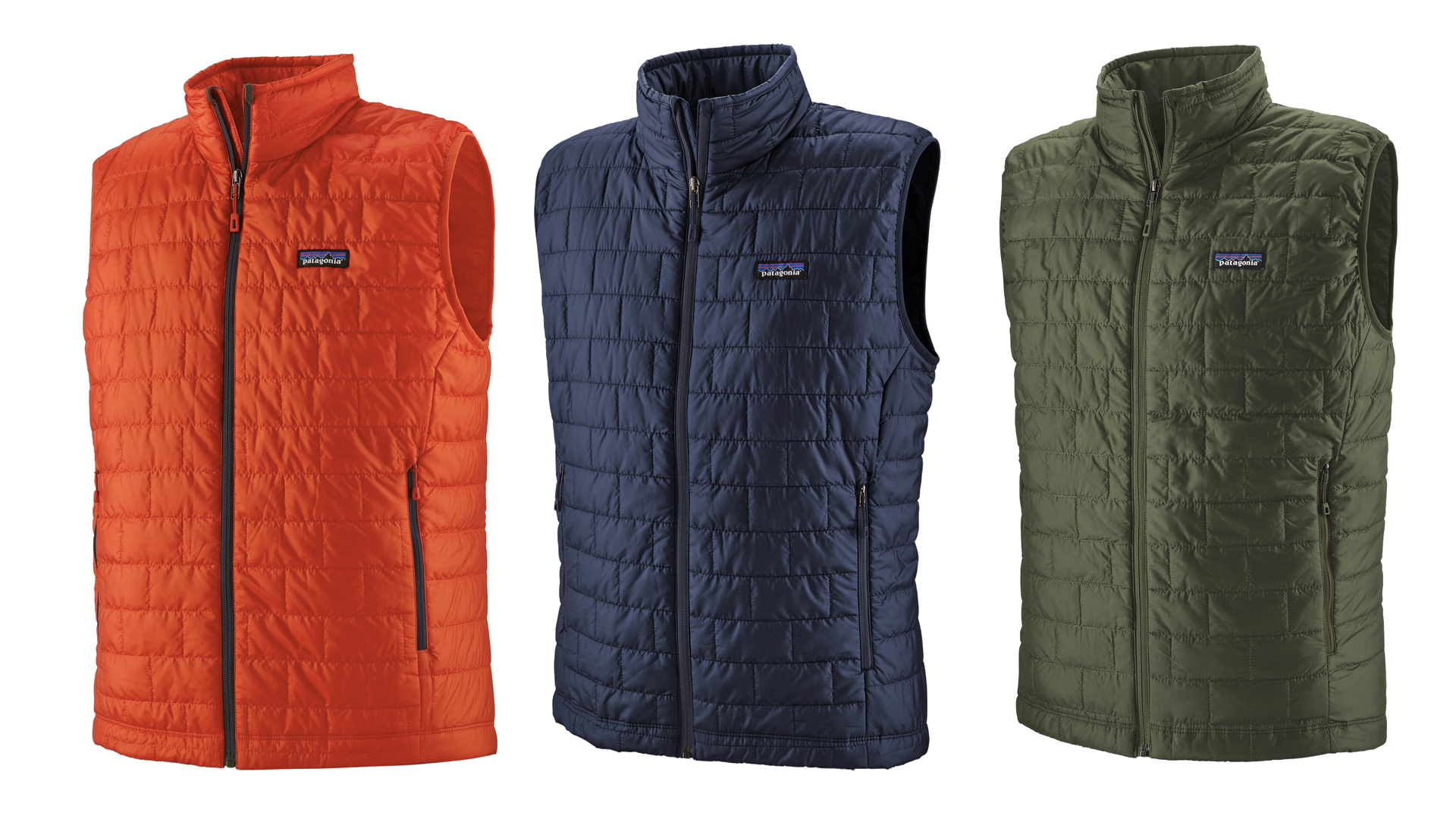
Specifications
Reasons to buy
Reasons to avoid
Patagonia are known for their commitment to eco friendly and ethical production, and the Nano Puff gilet certainly ticks all those boxes.
The gilet's shell and lining are constructed from recycled polyester - pretty common these days. However, the fabric has also been manufactured using a process aimed at cutting emissions and reducing the overall carbon footprint.
The garment's construction is also Fair Trade-certified, giving you the reassurance that it hasn't been made in sweatshops by children or exploited workers (see also: the best eco-friendly outdoor brands).
Insulation comes from 60g PrimaLoft Gold Insulation Eco 100%, which is both warm and highly compressible, meaning you can easily stuff it into its own chest pocket for convenient packing on the move. There's also a drawstring hem designed to trap extra heat on especially chilly days.
This is a looser fit than some other designs we tested, meaning you can wear it as a mid or outer layer. The downside to this is the collar isn't as snug as it could be, so you may want to add a scarf or neck gaiter. But otherwise it's a super toasty garment, that also boasts plenty of roomy pockets.
Read our full Patagonia Nano Puff Vest review
The best value
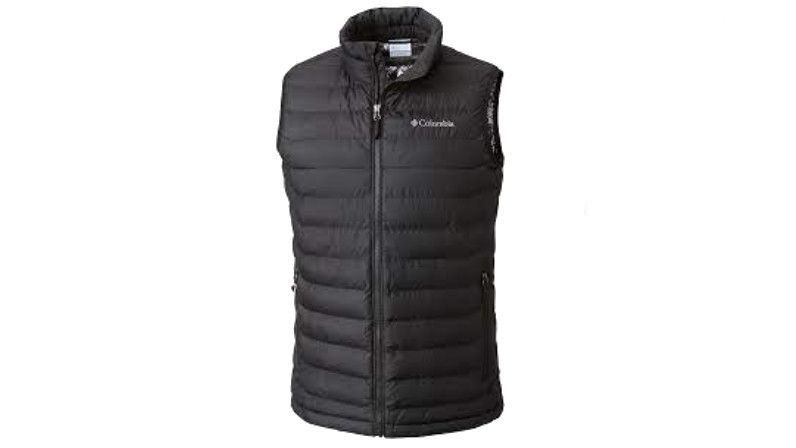
Specifications
Reasons to buy
Reasons to avoid
Once again Columbia's Omni-Heat thermal-reflective lining comes up trumps in their Powder Lite gilet. This special fabric bounces your body's heat back into the garment, creating much needed warmth, which is then locked in by the zipped hem.
We're fans of this tech (also found in other Columbia products, such as the Columbia Alpine Crux women’s down jacket and the Columbia Grand Trek down jacket) and the best thing is, it comes at a very reasonable price.
The Powder Lite's chunky baffles give it a down-filled look, but don't be fooled - the filling is a quick-drying synthetic, another factor in keeping the cost down. While its bulk means this gilet can't stuff into a tiny pouch, there are still more plus points to mention.
The polyester outer shell is water resistant and there are two good-sized zippable pockets too. With a friendly price point, and further savings to be had if you shop around, this is a budget friendly option that won't make you feel like you've cut corners.
Read our full Columbia Powder Lite review
The best for storage
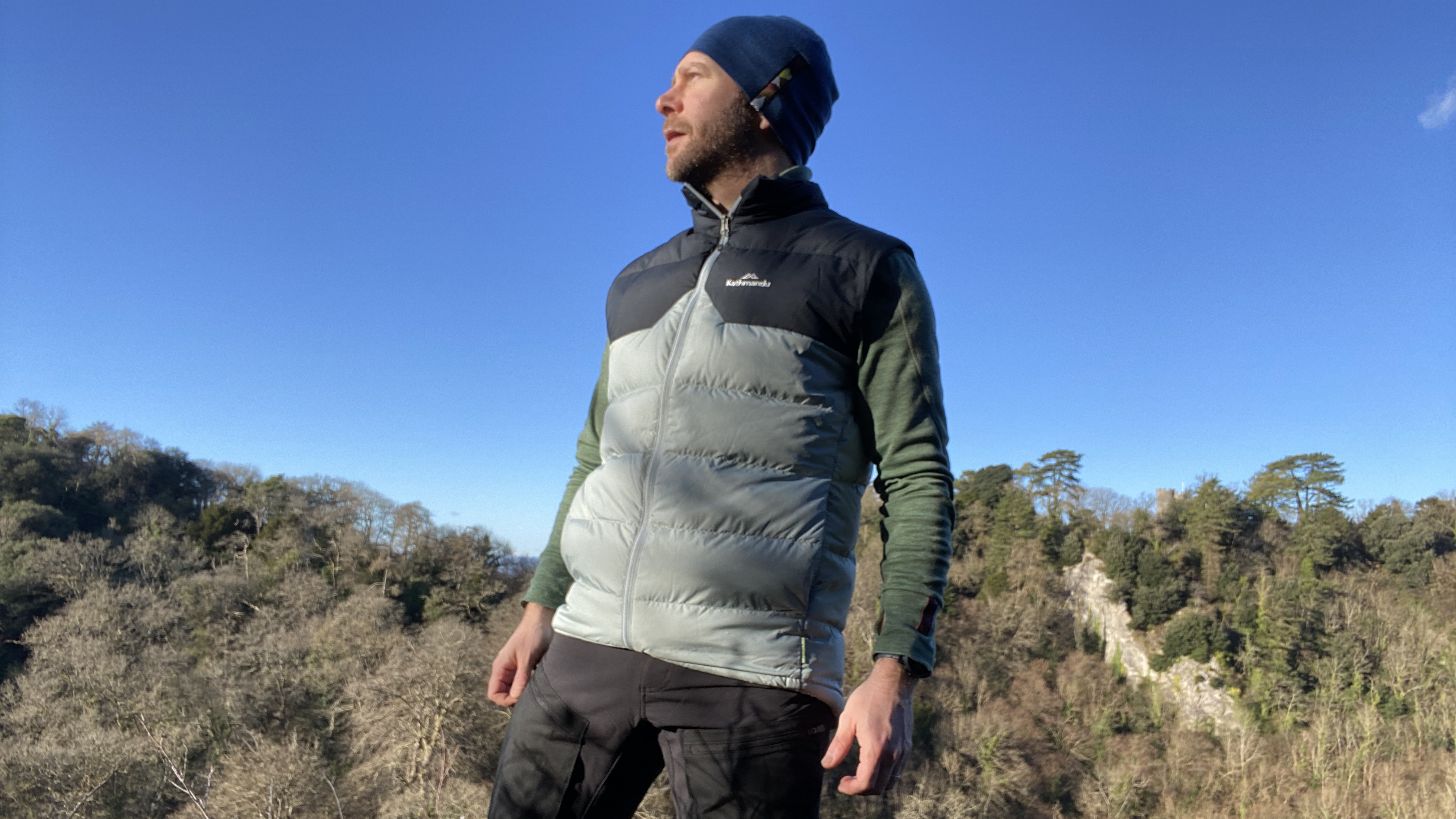
Specifications
Reasons to buy
Reasons to avoid
New Zealand-based outdoor brand Kathmandu is a certified B Corp, which means it works to high social and environmental standards, and the Kathmandu Epiq Men’s 600 Fill Down Vest, with its Responsible Down Standard filling, is no exception.
The Epiq Men’s Vest has a good warmth-to-weight ratio, and it's windproof and water-resistant thanks to a DWR coating. For extra shielding against the cold, there are elasticated drawstrings around the bottom hem, and a cozy chin guard that comes high up around the neck and jaw.
Our reviewer found the Kathmandu Epiq Men’s 600 Fill Down Vest to be nice and warm on the trails, while he also appreciated the number of pockets, particularly the plush hand-warmer pockets.
It is quite pricy though, and the men's sizes don't come in a great range of colors.
Read our full Kathmandu Epiq Men’s 600 Fill Down Vest review
The best recyclable gilet
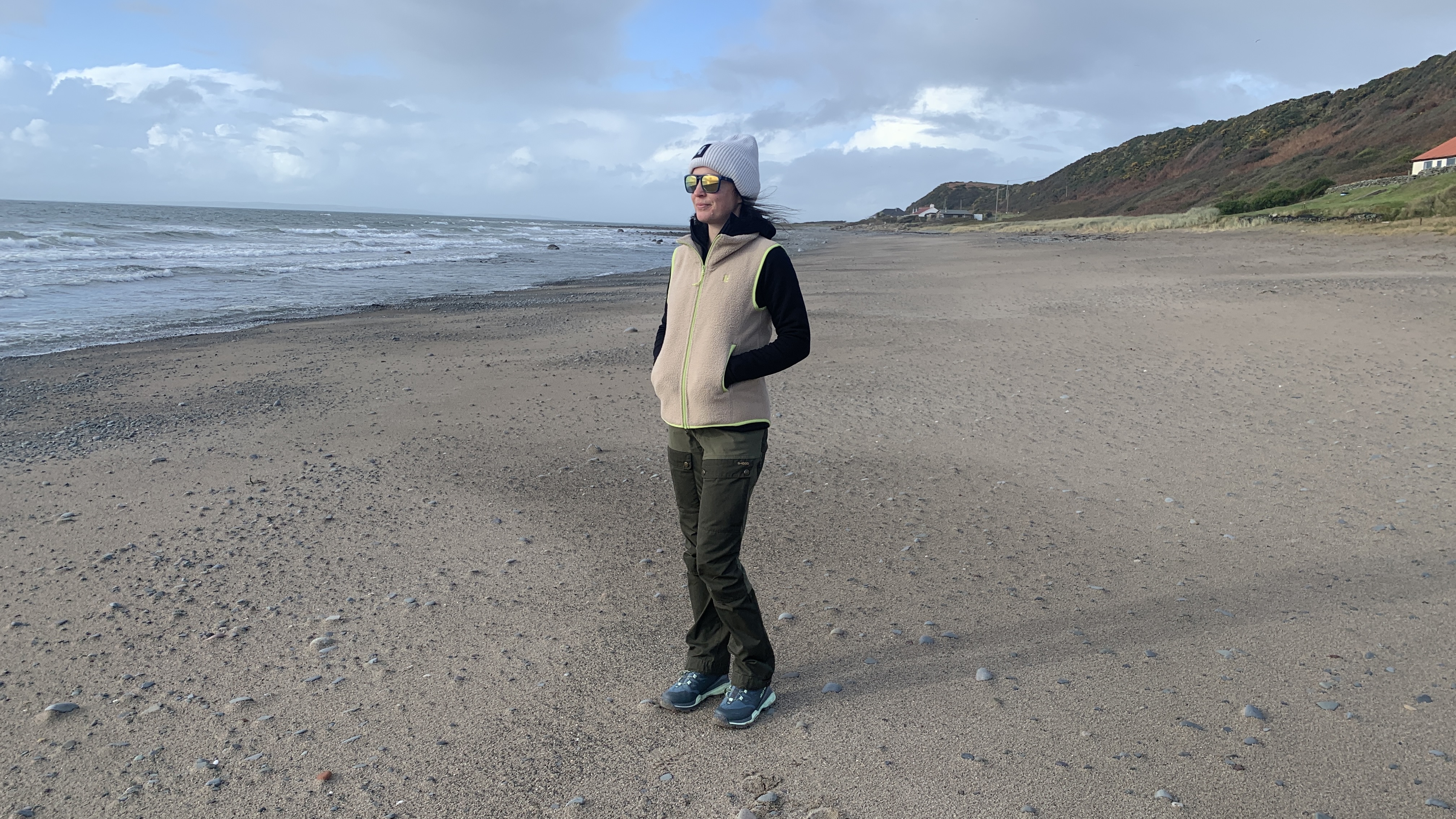
Specifications
Reasons to buy
Reasons to avoid
The BAM Bamboo Women’s 73 Zero Fleece Gilet is made of 100% recycled polyester, and at the end of its life you can return it to BAM for recycling – though that should be many years away as this is a robust, hardwearing layer you'll get plenty of use out of.
There's a high collar which is both stylish and great for keeping you extra snug, and you can wear this either as an outer layer on dry fall days or as a mid layer in winter. Our reviewer found that it made her instantly toasty the moment she put it on and ideal for the chilly Scottish fall.
The boxy, trendy fit of the two-sided fleece means it's as suited for a cold trek into town as it is hiking up Munros, and it comes in black (shown top) and tan (shown here) colors. There are also two deep inner pockets for storage, and two hand warmer pockets to, well, keep your hands warm as needed.
Read our full BAM Bamboo Women’s 73 Zero Fleece Gilet review
The best gilet for milder weather
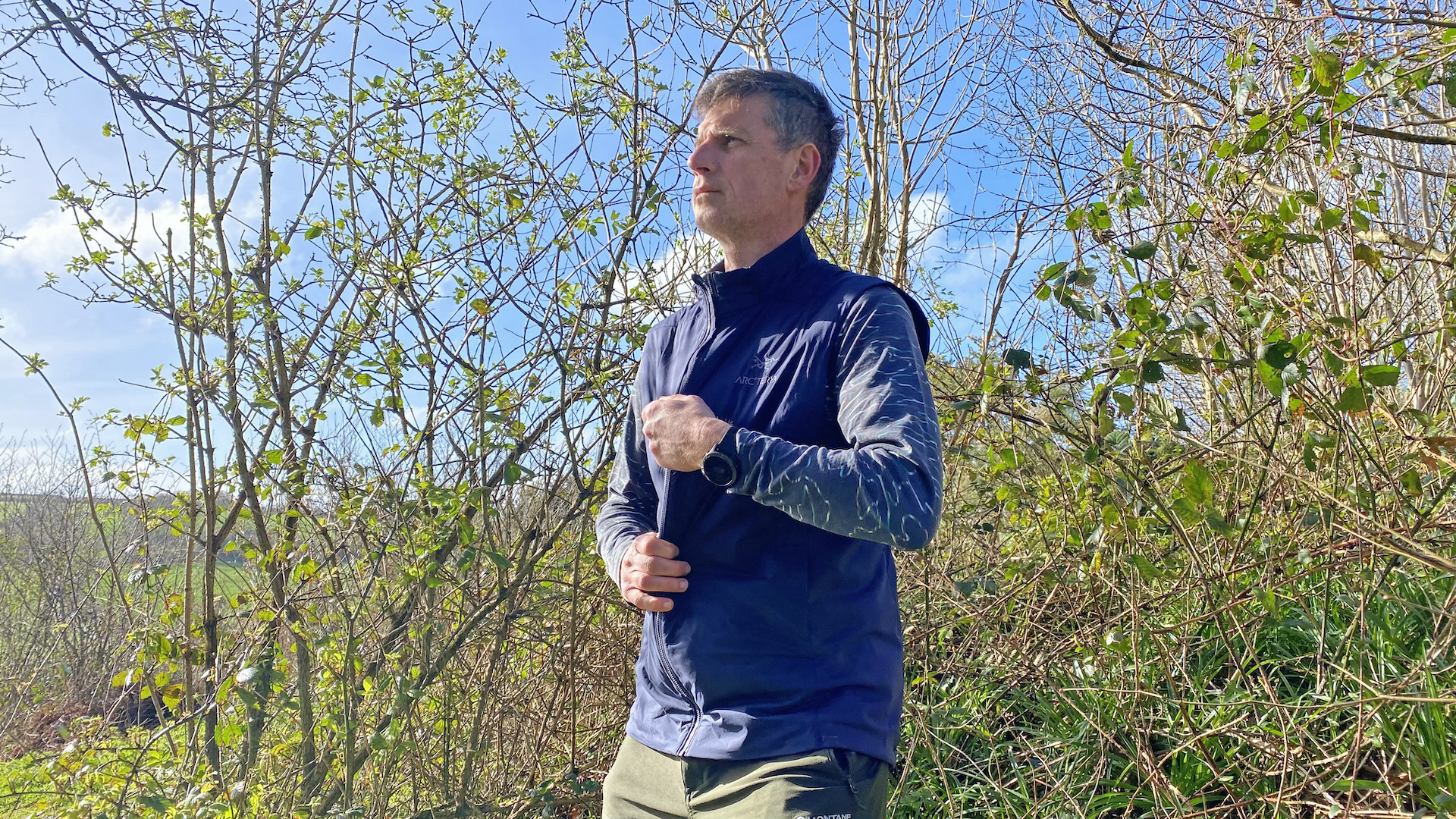
Specifications
Reasons to buy
Reasons to avoid
Super-versatile and stylish enough to wear to the pub, the Arc’teryx Atom Vest is a lightweight, breathable gilet that performs well on the trails.
It's a three-season garment, ideal for spring, fall and early/late summer, though it's not warm enough to see you through winter. The synthetic filling is 100% recycled and bluesign approved, and though this isn't really a vest for a downpour, the filling will retain its warmth and loft even when wet. The outer layer is also DWR treated so light rain should stay beaded on the surface.
The Arc’teryx Atom Vest has stretchy fleece side panels that allow a full range of arm movement without riding up, and the back panel extends down past the top of your rear to help keep drafts out. Our reviewer found the gilet allowed his body to breathe without overheating, while still protecting him from the wind. It also packs down tightly into one of its own pockets, so it's easy to add to your pack if you might think it's needed later on.
Read our full Arc’teryx Atom Vest review
The best fit
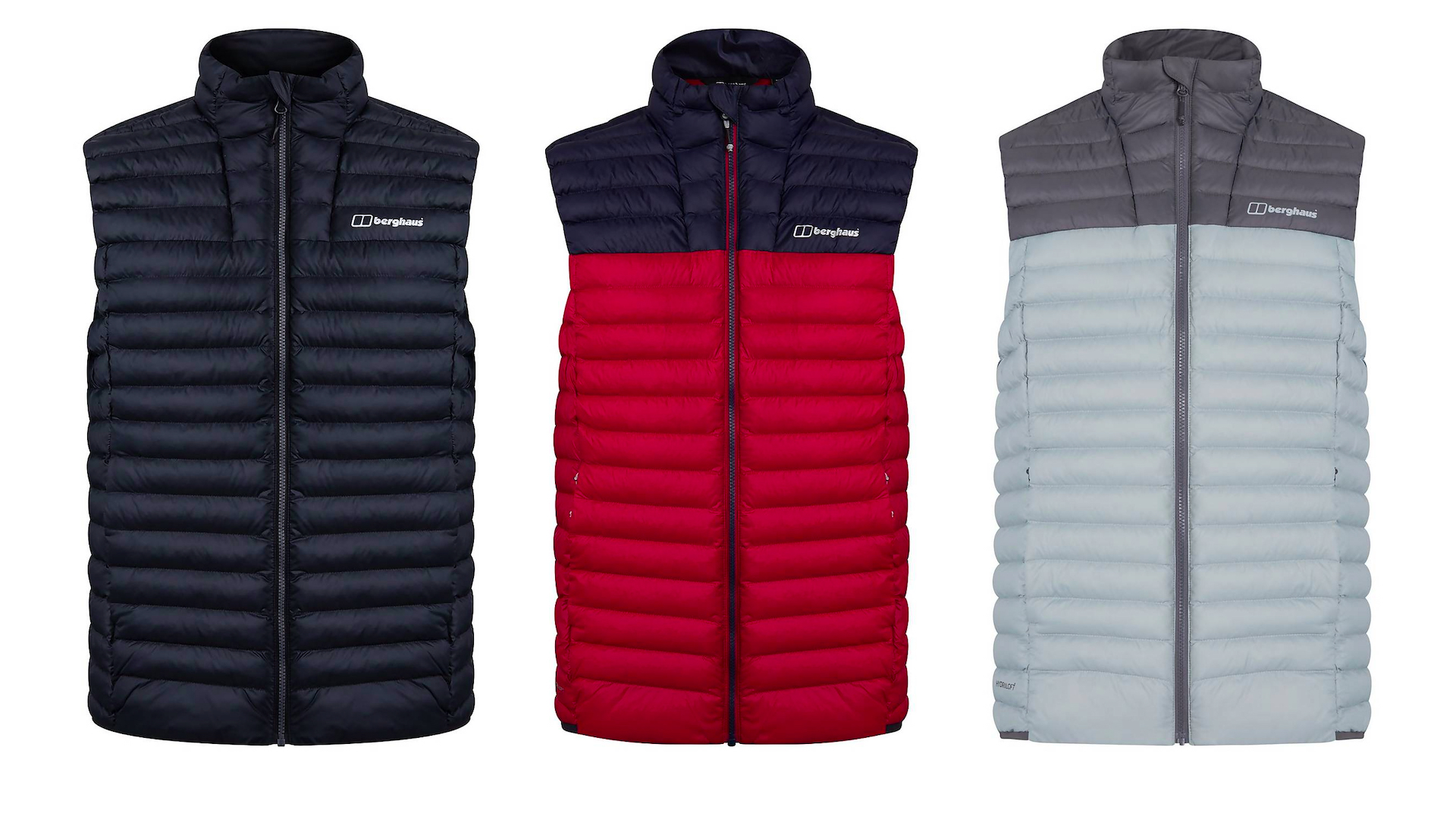
Specifications
Reasons to buy
Reasons to avoid
The cut of the Berghaus Vaskey is laser-focused on keeping in as much heat as possible, with a tall collar, soft chin guard, and elasticated armholes.
The outer fabric is Pertex Quantum, and has been treated with a rain-repelling PFC-free Durable Water Repellent finish. It's insulated with Hydroloft Polyball insulation and has a dropped back hem, so that the small of your back isn't bared to the elements when you bend over to retie your hiking boot laces.
With two generous concealed zipped hand pockets and an internal zipped pocket for your phone, there's plenty of storage, and it all packs down neatly when the going heats up and you no longer need its toasty properties.
Read our full Berghaus Vaskye Insulation Gilet review
The best hard wearing
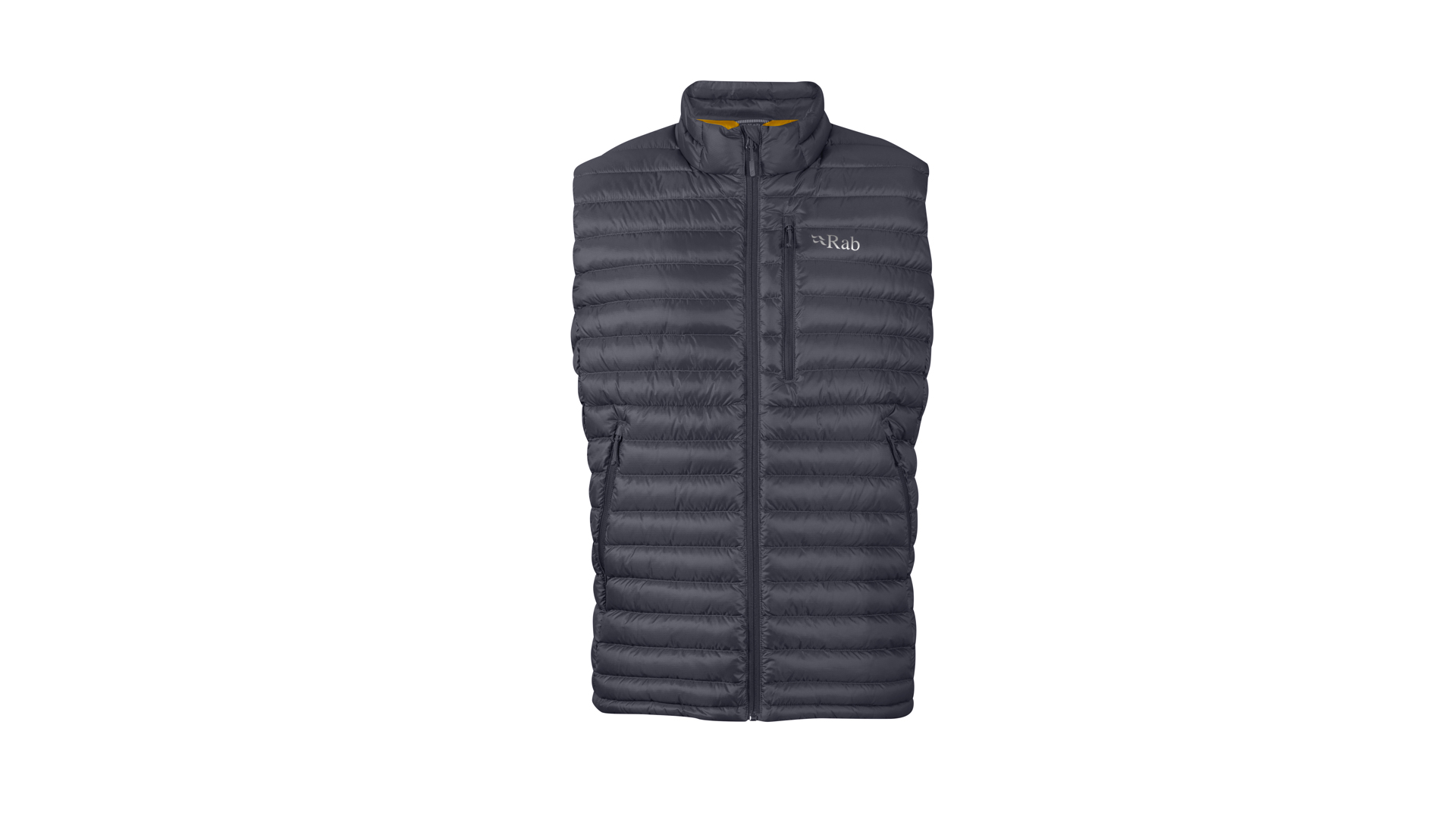
Specifications
Reasons to buy
Reasons to avoid
Like the Fjällräven Greenland Down, the Rab Microlight gilet uses ethically sourced down - in this case it's recycled, to give you all the natural warmth feathers provide, with none of the guilt.
The 30D Pertex Quantum ripstop nylon outer should be highly durable and has been treated with a Nikwax hydrophobic (water-resistant) finish. As with many of our other favorite gilets, there's a drawcord hem to keep the heat in and the baffles have been placed to eliminate cold sports.
Helpfully, Rab have their own excellent repair scheme, should you need it. The YKK zips for the hand pockets and large chest pocket should stand up to many years of use though. The Microlight also comes with a neat stuff sack to chuck it in your backpack when it's not being worn.
Read our full Rab Microlight Down Vest review
The best for ethical down
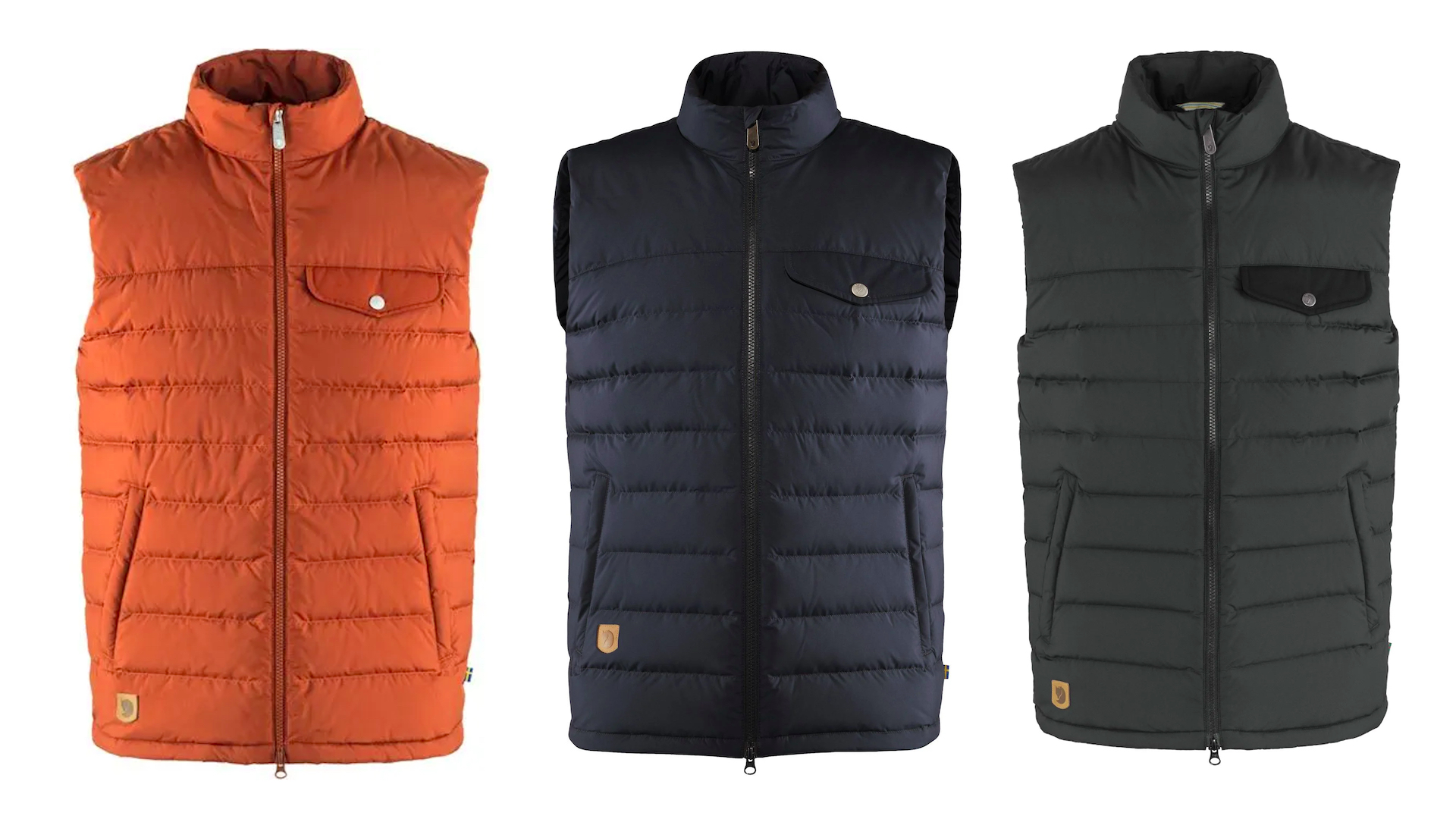
8. Fjällräven Greenland Down Vest
Our expert review:
Specifications
Reasons to buy
Reasons to avoid
Fjällräven have taken a sustainable approach to the creation of this vest/gilet, which is filled with ethically-sourced, traceable down, made up of 80% goose down and 20% feathers. It has a fill power of 600 - slightly less than the Rab Microlight's 700, but will still be super warm.
The outer is made from recycled polyester, and impregnated with a PFC-free water resistant treatment, giving you a lovely clear conscience about wearing one.
There's a handy chest pocket and two generous zipped hand pockets, and we think this vest makes a great mid layer under a waterproof shell to create a flexible version of a winter hiking jacket, or as an outer layer over a shirt or fleece on more clement days.
The Greenland Down is also a great choice if you're looking for a vest that can be worn deeper into the cold seasons than most.
The best for breathable performance
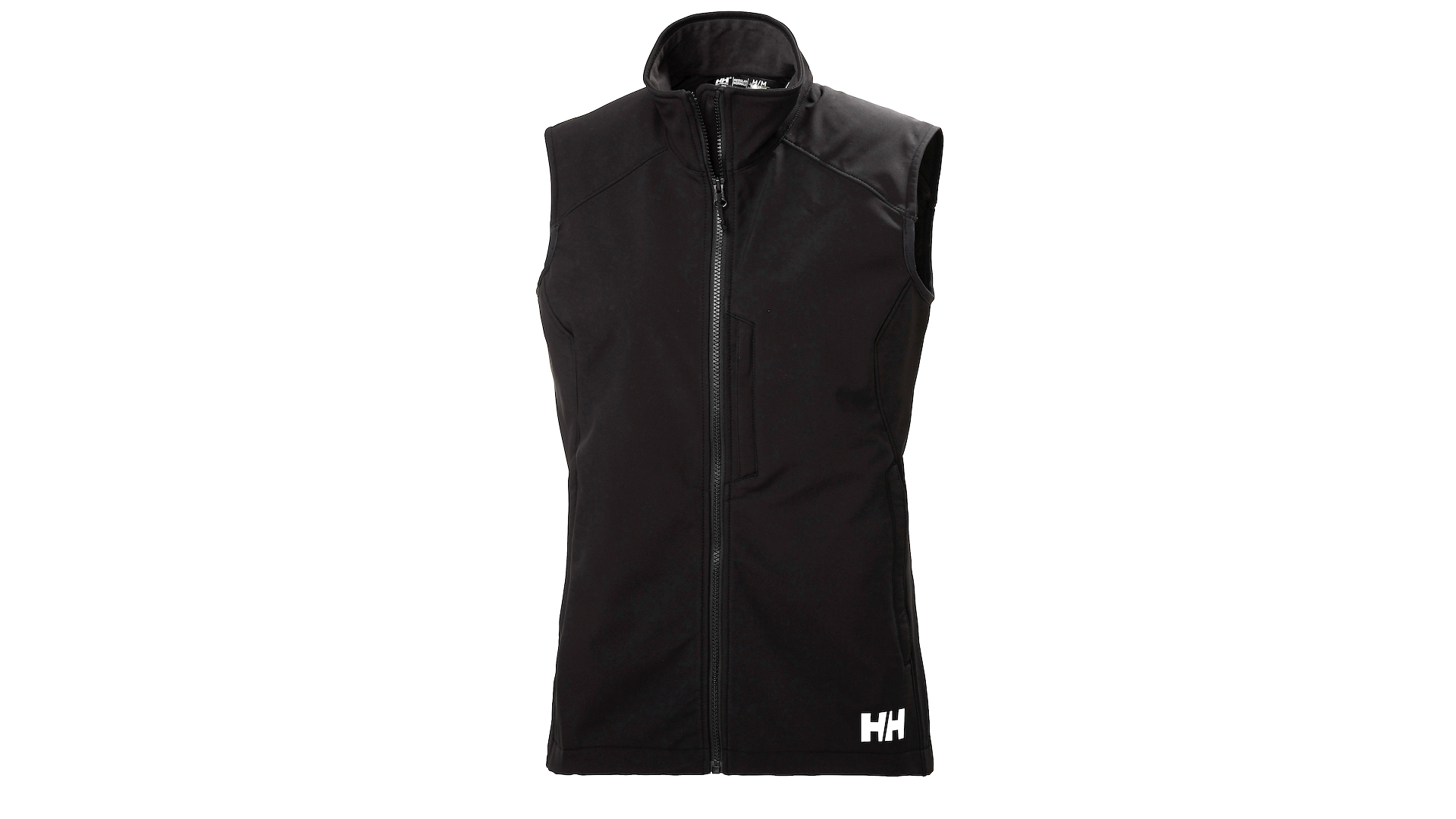
Specifications
Reasons to buy
Reasons to avoid
The Helly Hansen Paramount offers a different approach to the gilet, using fleece for insulating warmth and a soft-shell to keep out the wind and protect the torso from rain. The result is a performance garment, ideally suited to powering uphill, with better breathability than you can expect from most synthetic or down-filled vests and gilets.
It's also been made thoughtfully. The water-repellent treatment used on the outer is PFC free, and the vest has been manufactured using bluesign-certified processes.
For storage there's a chest pocket, and the usual hand pockets to keep your digits warm on chilly days. Its slim profile makes it smart contender for slipping under a waterproof shell too, and dare we say it, the Paramount would also be a smart choice for playing golf – a good walk spoiled, as Mark Twain might have said.
Read our full Helly Hansen Paramount Softshell Vest review
The best lightweight
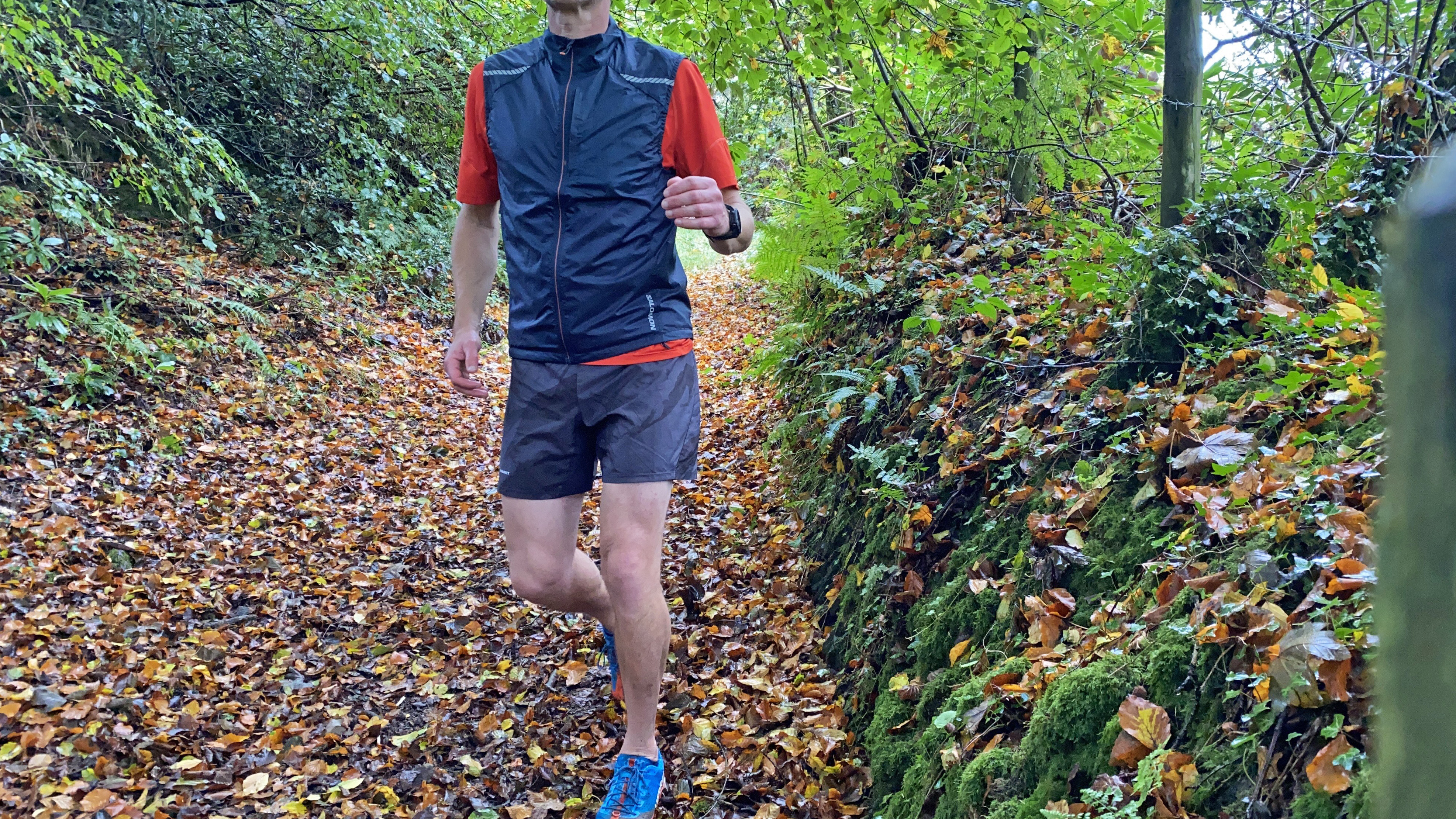
Specifications
Reasons to buy
Reasons to avoid
This incredibly lightweight sleeveless gilet top from Salomon is excellent for keeping windchill off your body during outings in blustery weather. Designed with runners in mind, it also works as a minimalist extra layer for hikers and fastpackers. Handily, it packs down very small, which means you can stuff it into any hydration pack or bum bag.
The vest version of the more comprehensive Sense Flow wind jacket, it enables you to keep your arms free whilst running and hiking, and allow for much appreciated airflow to your armpits. On top of this, the smart design features pinprick vents on the back panel of the vest that make the Sense Flow vest extremely breathable, while still shielding the wearer from the wind at the front, where the zip extends into a high neck for extra protection.
In really warm conditions, you can open the zip partially or fully, but stop it flapping around by using a popper that keeps the two sides together. There are reflective flourishes across the shoulders of the vest, for safety while running along lanes and roads shared with motorized traffic, and a zipped pocket on the chest can be used for carrying small items such as a gel, key or credit card.
The best over layer
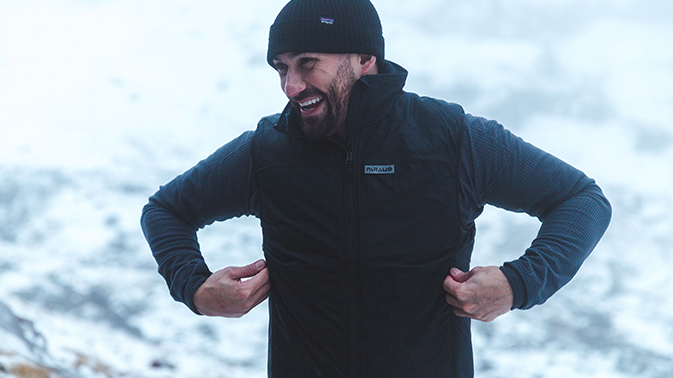
Specifications
Reasons to buy
Reasons to avoid
While all the other gilets on test here can be worn either as a mid layer or an outer layer, the Páramo Torres Medio is much more obviously designed to be worn on top of a base layer or even on top of a waterproof jacket.
Many gilet designs now take the approach of using very small baffles, but the Torres Medio goes in the opposite direction, with a 'slab' of insulation that will keep you significantly warmer in bitter weather. It also has a tall collar and elasticated arm holes also help to trap body heat, although there’s no hem cord at the base.
The synthetic insulation means the vest should still keep you warm even when wet, and the water-repellent outer will certainly delay that from happening anyway.
Páramo is another brand here that's working hard on its eco credentials and this vest has a shell made from 100% recycled polyester and synthetic insulation made from 55% recycled content.
Read our full review of the Páramo Torres Medio
How to choose the best gilet
Sleeveless hiking jackets go by several different names, depending on where you are in the world, but whether you know them as gilets, hiking vests or simply body warmers, having a piece of kit that reliably keeps your torso warm is absolutely invaluable from fall through to spring. So long as your vital organs are at a happy temperature, your brain will allow blood to keep flowing to your limbs and extremities, so although these vests don’t cover your arms, they help to keep you warm all the way to your fingertips.
Following are some key factors to think about when looking for the best hiking vests.
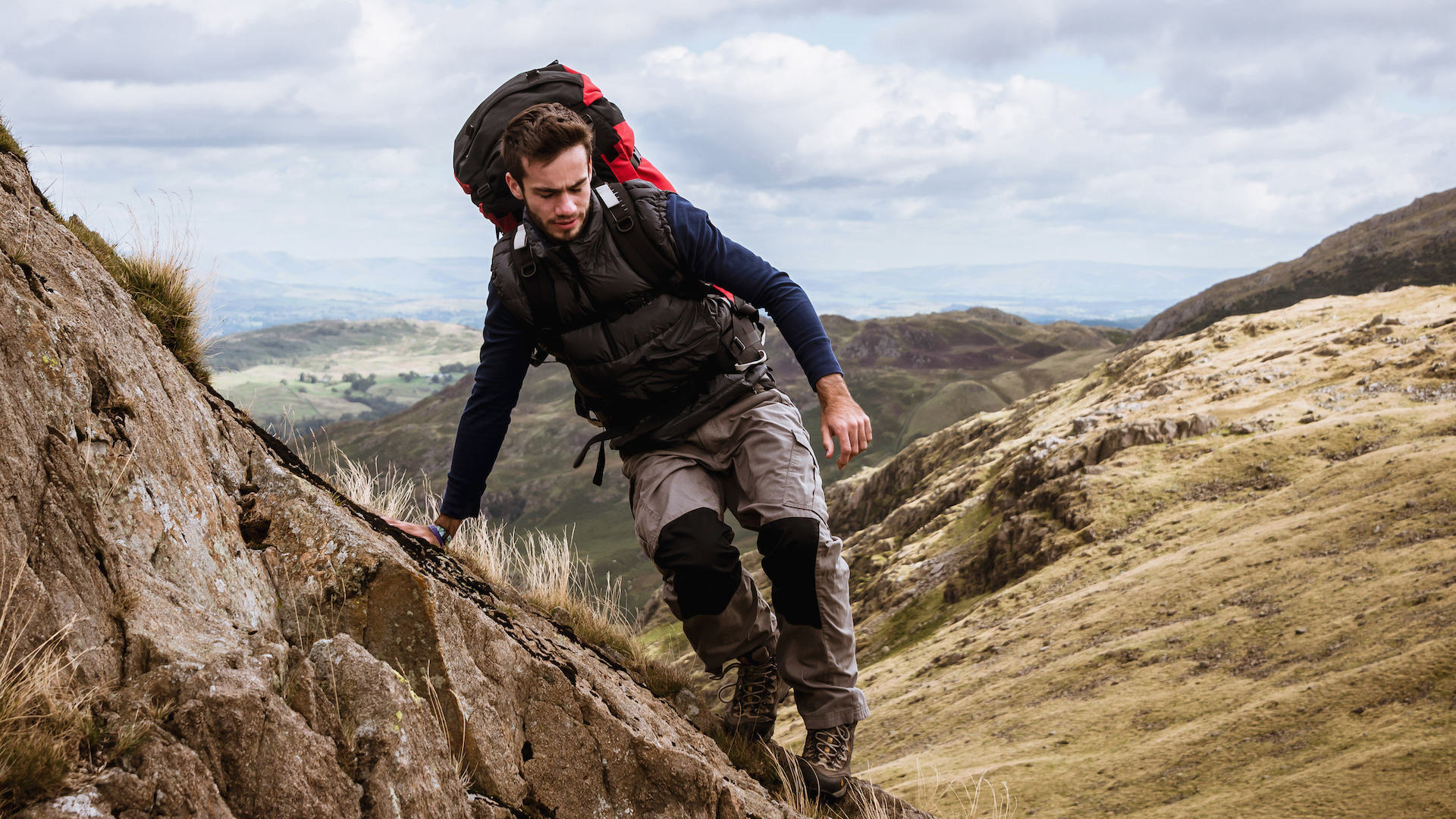
Fabric
You can trust Advnture
There’s no point pretending a sleeveless jacket is going to be waterproof, but a Durable Water-Repellent (DWR) finish can still fend off light rain. A number of brands are also making impressive strides towards recycled polyester for their outer layers and linings.
Insulation
The whole purpose of the best hiking vests is to keep your torso snugly warm, so the insulation is crucial. This typically boils down to making a choice between a vest with synthetic or down fill. Goose and duck down offer phenomenal warmth-to-weight performance. In a hierarchy of insulation, down outstrips feathers, so the ratio between the two does matter. The higher the down fill power figure (typically 600 to 700) the warmer the vest, but if down gets wet (from rain or sweat) the feathers lose their loft and with it their insulating properties. Hydrophobic treatments are improving down’s damp performance, but synthetic fillings hold the upperhand when wet.
There are also a rising number of ethical issues surrounding down, and particularly whether it has been plucked from a live or dead bird, or gathered from moulting birds. Top brands use traceable and even recycled down to assuage your conscience.
Synthetic fibres are light, warm and retain their heat-insulating properties better when wet. They also dry more quickly. And many are made from recycled polyesters. Synthetics are typically a little heavier than down, and don’t pack down as small.
Fit
The best walking vests need to be a close fit to trap air next to your body in order to keep you warm. A snug fit will also prove practical when wearing a gilet below a waterproof shell.
Look for elasticated arm openings, a drawcord hem and close-fitting collar to trap more heat and keep the breeze at bay.
Features
Zipped hand pockets are very useful in the best gilets, and an internal or external chest pocket is handy for a phone or wallet. It’s worth checking you can still access the pockets with a rucksack hip-belt fastened.
Vests that stuff into their own pocket or stuff sack are great when you want to pack them in your best hiking backpack.
Meet the expert

After spending a decade as editor of Country Walking, the UK’s biggest-selling walking magazine, Jonathan moved to edit Outdoor Fitness magazine, adding adrenaline to his adventures and expeditions. He has hiked stages or completed all of the UK's national trails, but was once overtaken by three Smurfs, Little Bo Peep, and a pair of Teletubbies on an ascent of Snowdon. (Turns out they were soldiers on a fundraising mission.)
How we test gilets
Our reviewers test gilets on trails in a range of environments in the colder months and shoulder seasons. Features (including insulation, thermal properties, style, materials, pockets, hoods, weight and overall comfort) are tested against claims made by the brand, and we assess factors such as value for money, durability, functionality and environmental impact.
- Best down jackets: snug puffers to keep out the winter chill
All the latest inspiration, tips and guides to help you plan your next Advnture!
After spending a decade as editor of Country Walking, the UK’s biggest-selling walking magazine, Jonathan moved to edit Outdoor Fitness magazine, adding adrenaline to his adventures and expeditions. He has hiked stages or completed all of the UK's national trails, but was once overtaken by three Smurfs, a cross-dressing Little Bo Peep, and a pair of Teletubbies on an ascent of Snowdon. (Turns out they were soldiers on a fundraising mission.)
